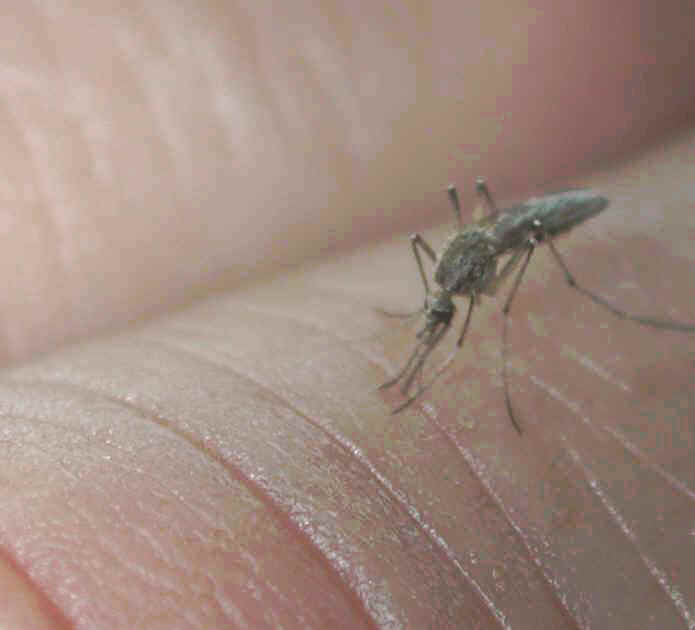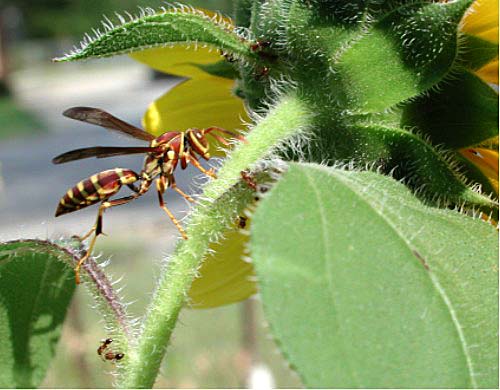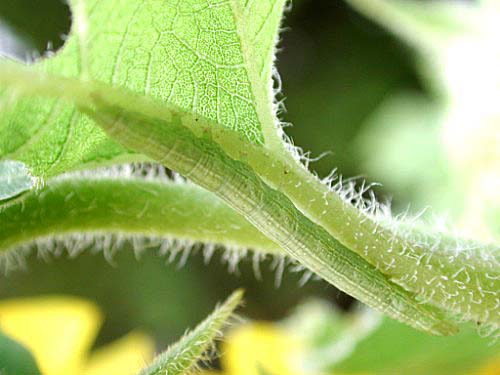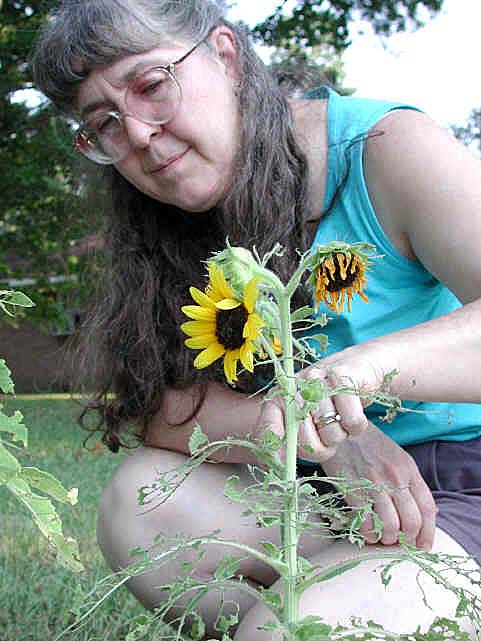
Spray
for Bad bugs (mosquitoes)
kills good bugs (caterpillar-eating wasps),
and causes an increase in bad bugs (caterpillars
eating our plants).
In early 2002 we had vary little rain. One good thing about the drought is that there was no mosquito spraying through the early and mid summer. But in early August came the fateful day when the spray rig came by our home.

An hour and a half after the spray one morning, right along the roadside, where the spray was the strongest, here is what happened to my finger. It shows that the spray didn't work.

But it gets worse. Up until that time we had not seen any worm damage in our garden. There were wasps patrolling constantly through the leaves of the plants. Those caterpillars that hatched did not have much chance. They were grabbed and carried home to feed Mrs. Wasp's babies. Lots of folks think wasps are bad and should be killed, but you will see how quickly you get into trouble when wasps aren't there.

Image
© 2002 David L. Green
After that fateful spray the wasps were gone. We suspect they were dead. Suddenly our sunflowers were covered with green caterpillars, who greedily munched away the leaves. No wasps were hunting to control them.

Image © 2002
David L. Green
Within a few days the leaves were decimated. Should we poison them, or not? We decided not. We don't see any point in adding another toxin to our environment for simply an ornamental plant. We were quite disappointed though, in the loss. Later we began to see a lot of armyworm moths in our yard, laying eggs for next spring. Armyworms are a very serious pest problem for farmers. We also had our first tomato hornworm of the season, who showed up about three weeks after the first spray. Before that, the wasps had kept the tomatoes free of worms.

Image © 2002 David L. Green
By the way, the sprayers call themselves a mosquito abatement program, which is a joke. "Abatement" means there should not be mosquitoes after the spray. But there were plenty of mosquitoes still around the next day. Only the good bugs were gone. Here is another good bug that disappeared:

Image © 2001
David L. Green
Dragonflies, like the one above are flying mosquito catchers. In fact they are also called mosquito hawks. From his perch on the car antenna, he can watch the entire yard with his huge eyes. If he sees a mosquito, off he goes to catch it in mid-air. Dragonfly larvae eat even more mosquitoes in the water, while they are still wigglers. If the mosquito hawks are killed, the mosquitoes come back in greater numbers than before. In fact, the more you spray, the more you have to spray. It's like getting on to a treadmill.
The mosquito people themselves admit that spraying for adult mosquitoes is an exercise in futility. Yet they still do it, which indicates that it's a political thing, rather than a matter of good policy.
See how mosquitoes can be controlled when they are still wigglers.
For more on the futility, and health and environmental dangers of adult mosquito spraying see James Irwin's http://nospraynews.org.
More on using good bugs to control bad ones:
ACORN
Alternative Control Outreach Research Network
at Purdue IL
Biological
Control News
WI
Biological
Control Virtual Information Center
NC
Biological
Control (Journal)
List
of Suppliers of Beneficial Insects in North America